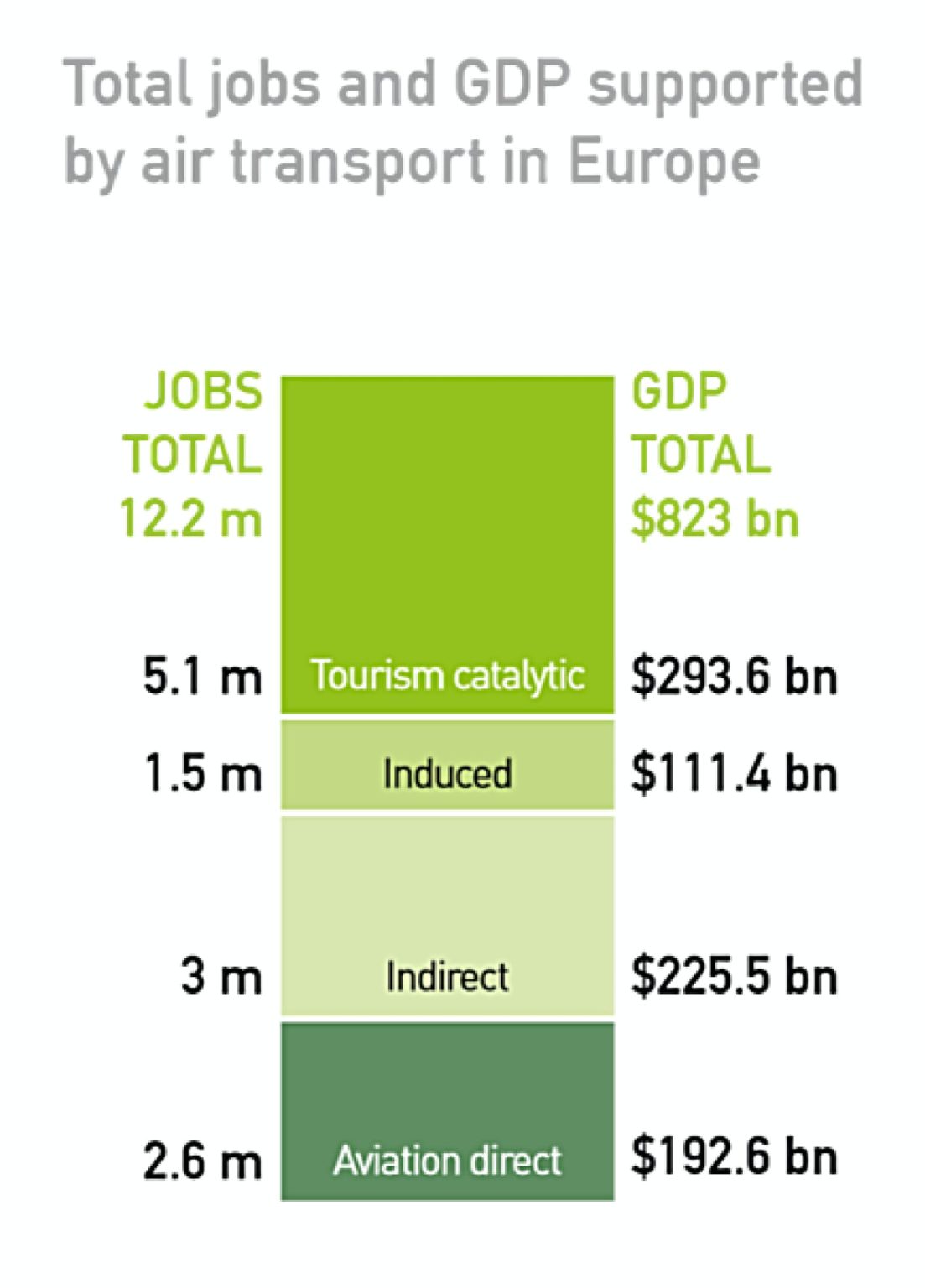In 2004, the European Commission created the Single European Sky (SES I) regulation. Its ultimate objective was to increase safety, capacity and performance in general — while improving the economic, financial and environmental performance of the provisions of the Air Navigation Services in Europe in particular. This regulation was subsequently updated once in 2009 (SES II) and a further update has been pending since 2013.

Source: ATAG 2018
A4E is convinced that this regulation should provide the baseline and necessary tools for sustainable, modern, efficient and environmentally friendly aviation operations. It defines the framework and the roles and responsibilities of the different European and national governmental organisations in aviation.
SES regulation supports aviation’s current €169.64 billion contribution toward European GDP and the employment of 2.6 m EU citizens.
Demand for air travel has grown substantially in the last few years, and this upward trend is expected to continue. The aviation system as a whole has been put under pressure by continuous increases in traffic, lack of available capacity and a requirement to integrate new airspace users, such as drones. This stress has prompted the wider aviation community as well as the European Commissionhttps://ec.europa.eu/commission/commissioners/2014-2019/bulc/announcements/joint-statement-violeta-bulc-eu-commissioner-transport-and-karima-delli-chair-european-parliaments_en to identify areas of improvement on a technical, operational, regulatory level, namely:
- airspace efficiency, e.g. in the form of a seamless European sky;
- supporting service and demand-oriented aviation with clear roles and responsibilities within a competitive environment.
Changes in regulation require extensive collaboration and consultation between policy-makers and the regulated aviation industry. Therefore, we urge all stakeholders involved to:
- Finalise the reform of SES II to create a framework that is suitable for future EU traffic growth as early as possible;
- Genuinely cooperate to alleviate political bottlenecks and allow instruments already existing in the SES regulation to reach their full potential.
We believe that addressing these areas of improvement is of utmost importance as it will ensure that regulation supports the necessary technical, operational and organisational changes. These changes are required in order to safeguard a future air transport management system that is flexible, predictable, efficient, environmentally-friendly and sustainable — ultimately meeting the needs of the future passengers.